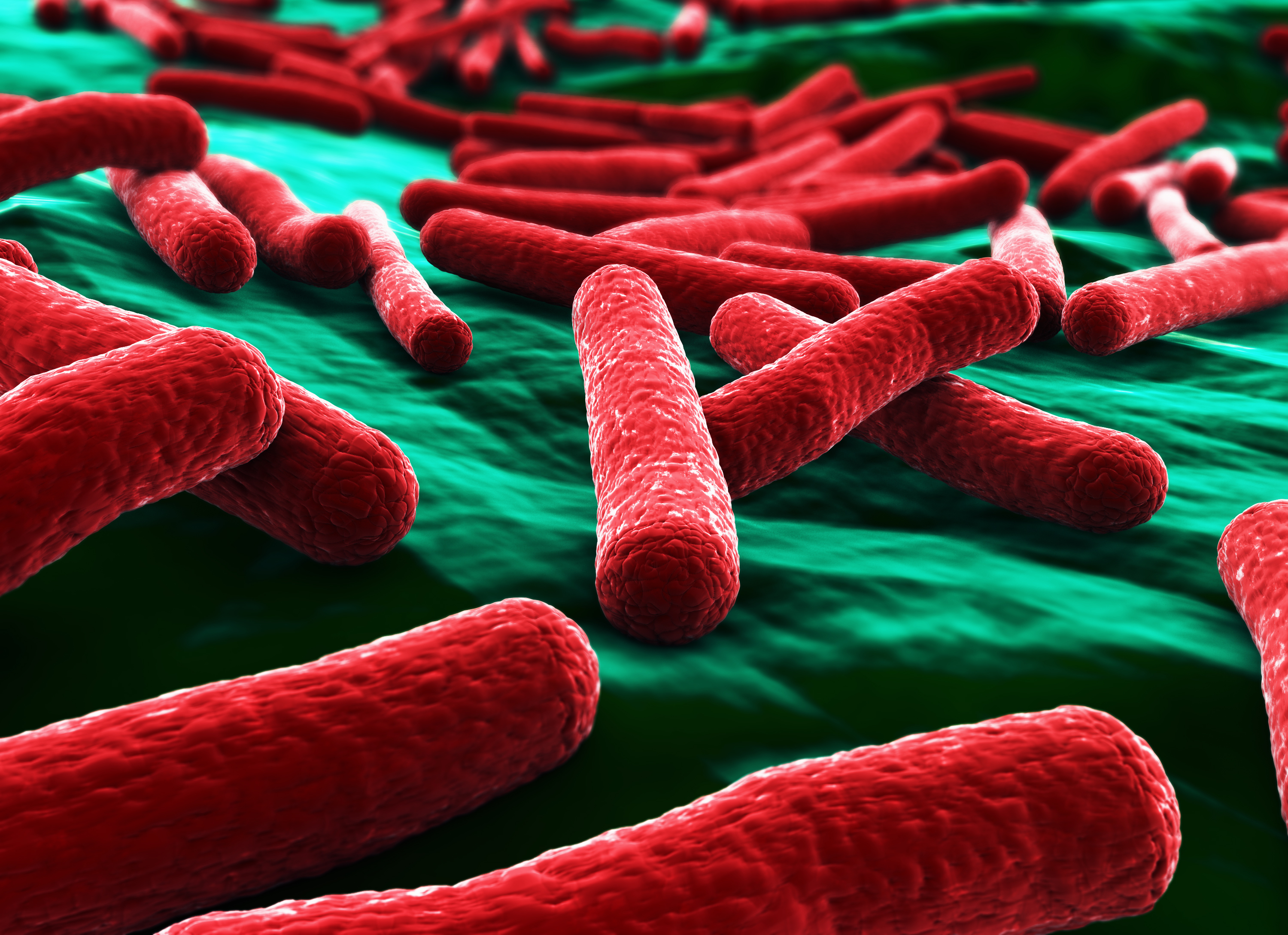
E.coli bacteria close-up
Living in the intestines of humans and animals, many E. coli bacteria are harmless. However, some strains are pathogenic, known for causing illnesses and transmitted through contaminated food and water, or contact with infected animals or persons.
Scientists with Singapore’s Agency for Science, Technology and Research’s Institute of Bioengineering and Nanotechnology have developed a new material capable of destroying drug-resistant bacteria, including E. coli.
The researchers published their work on the new antimicrobial, called imidazolium oligomers, in the journal Small.
“Infectious diseases and the increasing threat of worldwide pandemics have underscored the importance of antibiotics and hygiene,” the researchers wrote. “Intensive efforts have been devoted to developing new antibiotics to meet the rapidly growing demand. In particular, advancing the knowledge of the structure-property-activity relationship is critical to expedite the design and development of novel antimicrobial with the needed potential and efficacy.”
The researchers reported that their antimicrobial killed 99.7 percent of the E. coli bacteria within 30 seconds. Further, when tested on other antibiotic-resistant bacteria and fungi, such as Staphylococcus aureus and Candida albicans, it achieved a kill rate of 99.9 percent within two minutes.
The material owes its success to its chain-like structure.
“Computational chemistry studies supported our experimental findings that the chain-like compound works by attacking the cell membrane,” said study author Yugen Zhang in a statement. “The material is also safe for use because it carries a positive charge that targets the more negatively charged bacteria, without destroying red blood cells.”
The researchers suggest the new material could serve as an alternative to triclosan, an ingredient in many consumer products meant to reduce or prevent bacterial infection. According to the U.S. Food and Drug Administration, the efficacy of triclosan is currently under investigation. “Studies in bacteria have raised the possibility that triclosan contributes to making bacteria resistant to antibiotics,” according to the agency.
Interestingly, the researchers discovered the material creates a gel when mixed with alcohol. They suggested it could be used as a sterilization spray for hospitals and homes.




